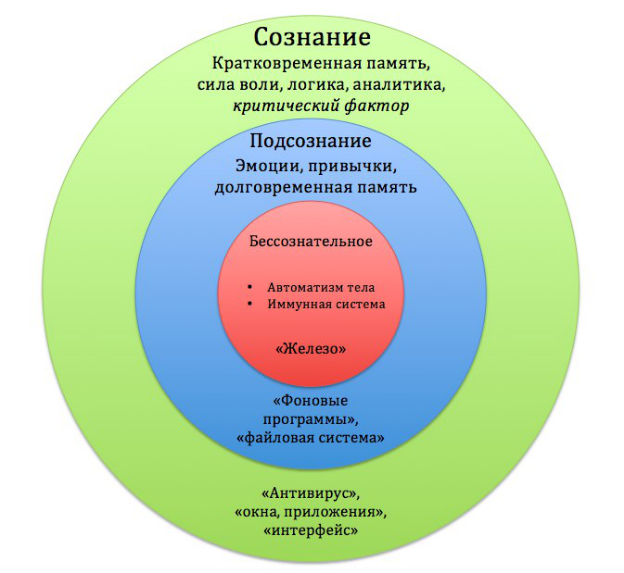How Hypnosis Works: Habits, Willpower, and the Brain
Let’s look at a common example: someone wants to break a bad habit, like quitting smoking. They make a conscious decision not to touch a cigarette, and for a while, they manage to avoid smoking and stop themselves from buying cigarettes. But then something interesting happens: the person, relying on willpower, starts acting differently than they intended. They begin spending more time with people who smoke, find mental excuses to light up, and eventually start smoking again. Their willpower fails, and they get further proof that quitting smoking by willpower alone doesn’t work.
The person feels as if something inside is controlling their actions and will, making them buy cigarettes over and over. They act out of habit, which once again overpowers their willpower.
To explain this and many other processes related to habits, emotions, and the interaction between the conscious, subconscious, and unconscious, American hypnotist Gerald Kein proposed a simplified model of how the brain works.
Conscious Level
At the conscious level, a person makes deliberate decisions, like in our example: putting out their last cigarette, refusing to join colleagues or friends for a smoke break, or walking past a tobacco kiosk while remembering their intention to stop poisoning their body. The conscious level is characterized by willpower, logic, analytical thinking, and the critical factor (analyzing and processing incoming information, the “gatekeeper of consciousness”).
If we compare this level to a computer system, it’s like the desktop and windows of an operating system. The person decides which windows to open, how to organize their desktop, and where to place program shortcuts. The conscious level is associated with short-term memory, which is why willpower often fails.
Subconscious Level
In the example above, the smoking habit exists at the subconscious level, which is out of reach for our much-tested willpower. Habits and skills are like computer programs running in the background. In conscious mode, a person is straightforward. However, when, for example, driving becomes a skill, over time it becomes possible to talk on the phone while driving—the subconscious handles the driving, while the conscious mind handles the conversation. The subconscious level holds our emotions, skills, habits, and long-term memory. In computer terms, these are the background programs and the person’s file system.
Unconscious Level
In computer slang, this is the person’s “hardware”: electrical circuits, power cables, and electricity. The unconscious automatically regulates breathing, blood pressure, eye movement, and so on, whether a person is asleep or even in a coma. This level can be accessed through the subconscious or hypnosis. There’s a well-known example: a criminal sentenced to death was hypnotized with his eyes covered and was told his veins had been cut, and he began to bleed profusely. In reality, the back of a blade was drawn across his arm, and warm water was poured over it. After a while, the person died. (V. M. Bekhterev, “Hypnosis. Suggestion. Telepathy”). There are many such examples.
So, in our example, this model can be used to help someone quit smoking. All it takes is to “remove” the smoking program from the subconscious level, which is undoubtedly easier and more effective than trying to quit through willpower alone. It’s simple and effective because, in hypnosis, the therapist communicates directly with the client’s subconscious, bypassing the “critical factor” that stands guard.
Author: Renat Khasanov, NLP Master



